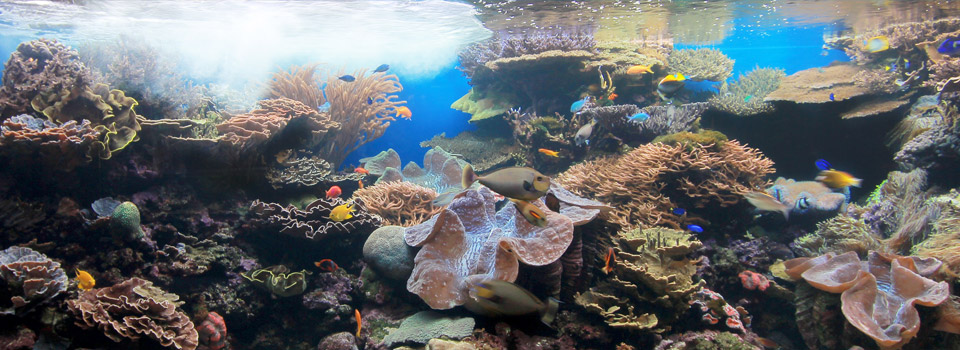South Pacific Marine Communities

In this gallery
Archerfish
Clownfish
Carpet anemone
Bubble coral
Panther grouper
Red-tooth triggerfish
Giant clams
The greatest diversity of marine life occurs on coral reefs of the tropical Pacific Ocean. Over 4,000 species of fishes and 400 species of corals occur in the region from southern Japan to Australia’s Great Barrier Reef. The South Pacific Marine Communities gallery includes five exhibits that highlight critical habitats and ecological communities found in this region, as well as threats to these habitats.
The Land Meets the Sea exhibit features a living mangrove forest containing fish and plants commonly found along the shorelines of tropical regions. Seagrasses, which are aquatic plants, are also found in these waters and help create a lush underwater forest which provides shelter for juvenile fish and invertebrates.
The Reef Partners exhibit highlights the numerous relationships found on a reef, such as that between clownfish and sea anemones! Here you will find dozens of clownfish nestled within a living carpet of anemones.
The Lagoon Corals exhibit contains various live corals with large, fleshy polyps waving gently in the current and fishes found in the sheltered reefs between the shoreline and the offshore reefs of many Pacific islands.
At the Reef Predators exhibit, you will find numerous species of fish that prey on other fish species, and who, in turn, are themselves eaten by still larger species, such as sharks or jacks. Many of the species seen here form a large part of the diet of indigenous Pacific Islanders.
The highlight of the gallery is the 5,500 gallon (~21,000 liters) Barrier Reef exhibit, containing over a 100 species of fish, giant clams and live corals! The giant clams in this exhibit are probably the largest and oldest in captivity anywhere in the world and weigh over 170 pounds (77 kilograms)! Use the interactive touch screen to identify and learn more about the animals in the exhibit.
Support the Aquarium
Contact Us
Honolulu, HI 96815
(808) 923-9741
Search
- Already a Volunteer?
- Click Here To Sign In


 Donate
Donate
